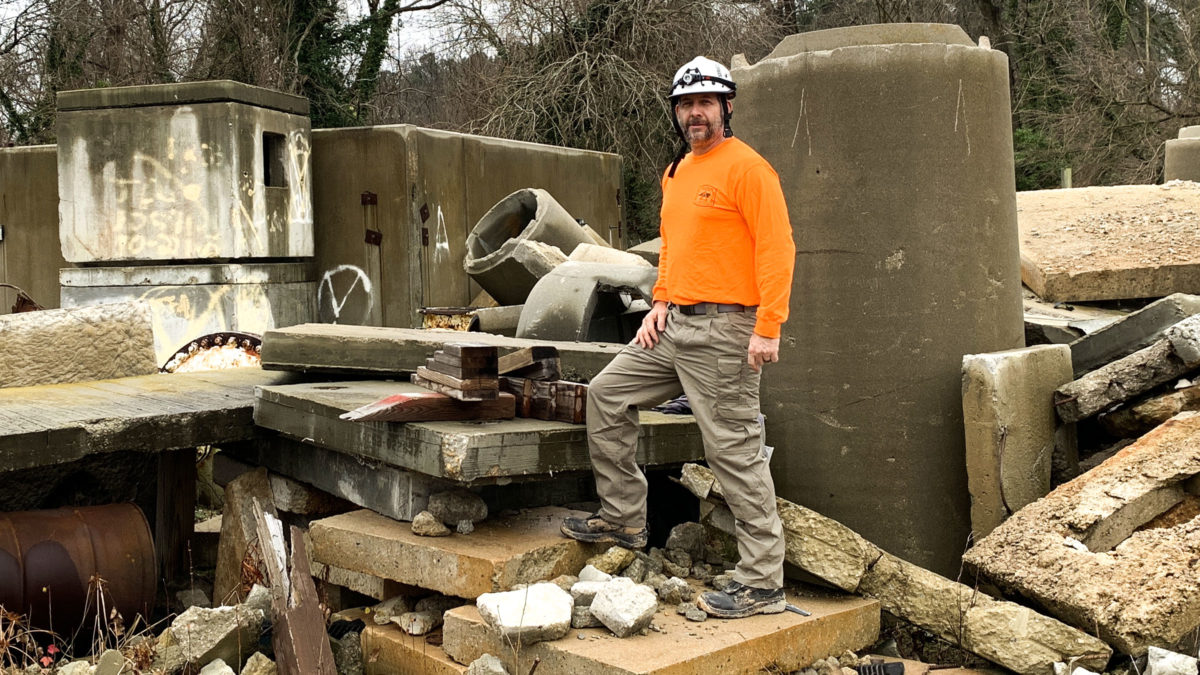People of CN: Klaus Perkins
 Klaus is part of the one percent. In this case, the estimated one percent of structural engineers who are involved with FEMA’s Urban Search & Rescue (USAR) or the NCSEA’s Structural Engineers Emergency Response (SEER) groups. He serves as a structures specialist on a North Carolina USAR team that is called to do search and rescue operations after disasters such as earthquakes, hurricanes, or gas explosions. After Hurricane Florence hit in 2018, he was deployed to Laurinburg, NC for a week as part of an emergency response convoy. Klaus reflects on his deployment experience:
Klaus is part of the one percent. In this case, the estimated one percent of structural engineers who are involved with FEMA’s Urban Search & Rescue (USAR) or the NCSEA’s Structural Engineers Emergency Response (SEER) groups. He serves as a structures specialist on a North Carolina USAR team that is called to do search and rescue operations after disasters such as earthquakes, hurricanes, or gas explosions. After Hurricane Florence hit in 2018, he was deployed to Laurinburg, NC for a week as part of an emergency response convoy. Klaus reflects on his deployment experience:
“I was helping clean up a yard when the Captain came over and said, ‘Hey, grab your gear. I need both of you to come with me.’ Another structures specialist and I then went with the Captain to the Incident Command Center to be briefed. Joining another commander, the four of us went over to an earthen dam just beyond a bridge. The earthen dam was about a foot or so away from being overrun. A second earthen dam upriver was starting to erode, with about a foot of water flowing over the top of it. Our task was to evaluate the two dams and the capacity of the reservoir. After coming up with an action plan to minimize the erosion, the Incident Commander’s only question was whether people who had been evacuated days before could safely begin moving back into their homes. He was not interested in how to prevent further erosion.
You’re in a situation and they ask for your opinion and you don’t have time to sit down and get your calculator out to do all these calculations and figure things out to three decimal points. It’s a yes or no situation.
The other engineer and I discussed further. You don’t argue with each other in front of an incident commander. You have a discussion, you make a decision, and you present a unified voice. Our answer was yes, they could move people back into their houses, however, we wanted to re-evaluate the dam the next day in case any overnight rain changed the conditions. Presenting this caveat to the commander, his response to our request was ‘I’ll think about it.’ The next day, we’re at our base camp and I ask the Captain about going back, which he ran up the chain of command. The resulting answer was that our mission was complete. I never ended up seeing what the dam looked like the next day.
The experience as a whole had a large impact on me. Making a decision that can so gravely affect other people’s lives isn’t easy. You also don’t always know what the right answer is. In hindsight, the decisions we made were correct, but in the moment it was uncertain. That’s part of the challenge of this job. You’re in a situation and they ask for your opinion and you don’t have time to sit down and get your calculator out to do all these calculations and figure things out to three decimal points. It’s a yes or no situation. You have some time to think about it and, based on what you can see, you make some quick estimates, and offer a solution. In the end, the decision is not yours to make. The Incident Commander has the final say and he does not have to go with your advice.
In terms of coming up with an answer on the spot, you have to rely a lot on your gut and training, which is where the years of experience come into play. Knowing how things go together and how things fall apart, you rely on that instinct.”
Klaus Perkins was the leader of the structural team in our Raleigh office and left the firm in 2022.
